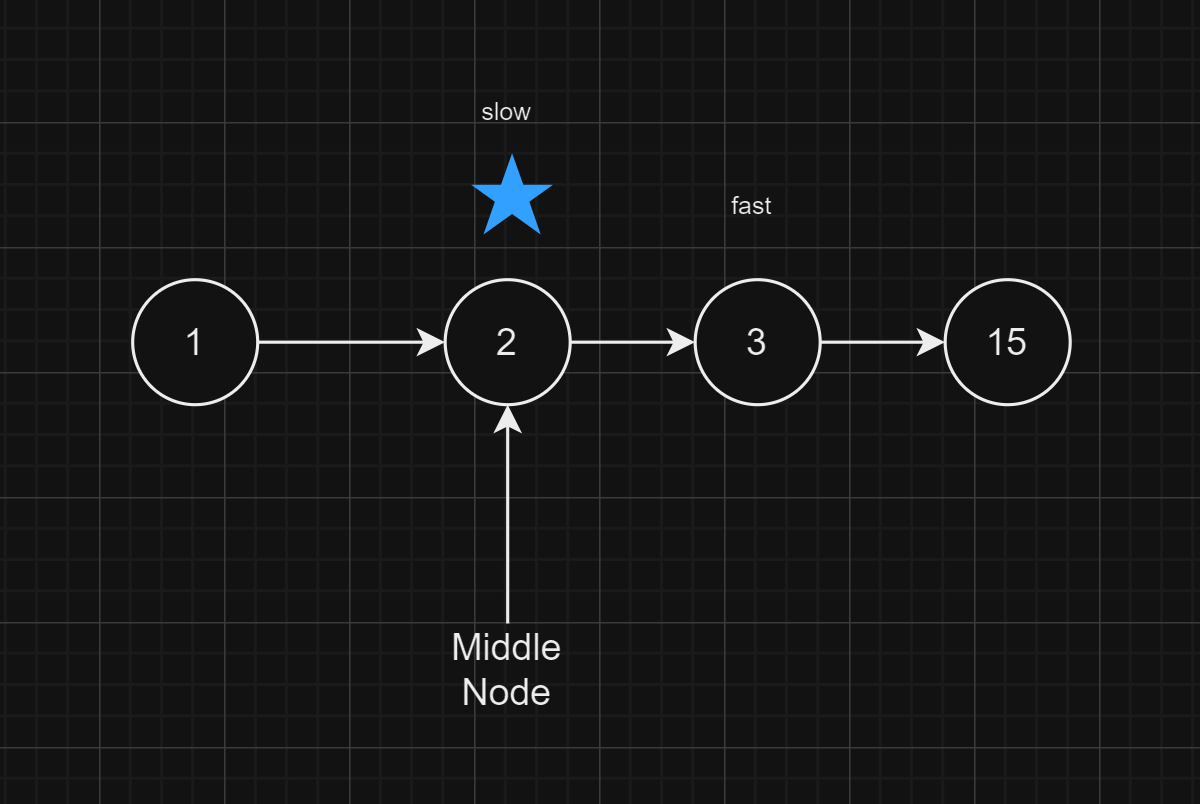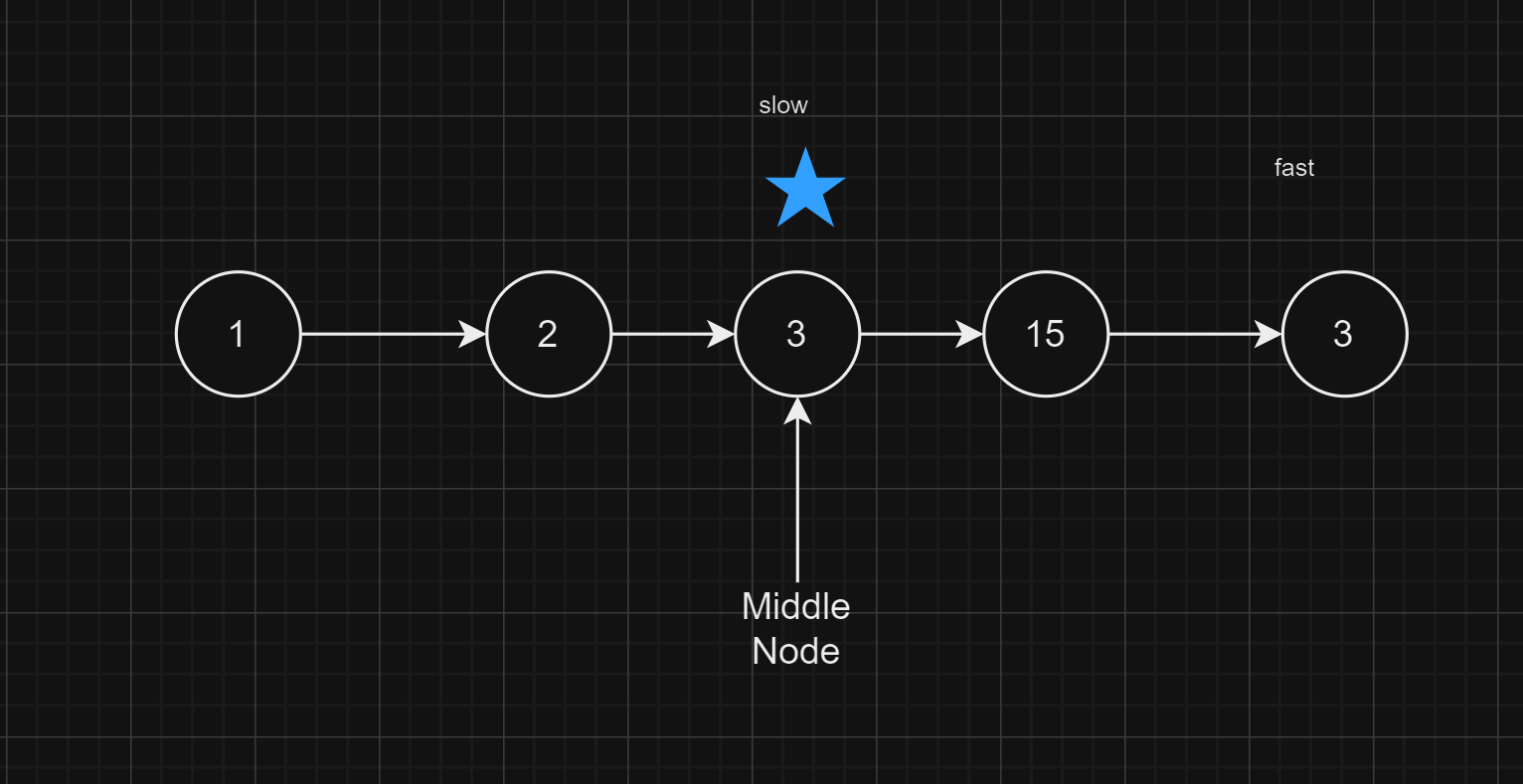LL 9 - Palindrome Linked List
 Chetan Datta
Chetan DattaTable of contents

Problem Statement
Given the head of a singly linked list, return true if it is a palindrome
or falseotherwise. (link)
Example 1:

Input: head = [1,2,2,1]
Output: true
Example 2:

Input: head = [1,2]
Output: false
Constraints:
The number of nodes in the list is in the range
[1, 10<sup>5</sup>].0 <= Node.val <= 9
Solution
Brute Force Approach
Using Stack
Using a Stack:
- We’ll iterate through the linked list, pushing each node onto the stack.
Second Iteration:
After storing all nodes in the stack, we’ll iterate through the linked list again (from the head).
During this iteration, we’ll compare the current node with the top of the stack.
If they match, we continue; otherwise, we return
false.
Checking for Palindrome:
- If we successfully iterate through the entire list without any mismatches, we return
true(indicating that the linked list is a palindrome).
- If we successfully iterate through the entire list without any mismatches, we return
Time - O(n)
Space - O(n)
class Solution {
public boolean isPalindrome(ListNode head) {
ListNode temp = head;
Stack<ListNode> stack = new Stack<>();
while(temp!=null){
stack.push(temp);
temp = temp.next;
}
temp = head;
while(temp!=null){
if(stack.pop().val != temp.val) return false;
temp = temp.next;
}
return true;
}
}
Using string
Appending Integers to a String:
As we traverse the linked list, we append the integer values of each node to a string.
For example, if your linked list contains nodes with values 1, 2, 3, 2, and 1, we create a string like “12321”.
Comparing with the Reversed String:
After constructing the string, compare it with its reverse.
If the original string and its reverse are the same, the linked list is a palindrome.
Time - O(n)
Space - O(n)
class Solution {
public boolean isPalindrome(ListNode head) {
ListNode temp = head;
String val = "";
while(temp!=null){
val += temp.val;
temp = temp.next;
}
StringBuilder val2 = new StringBuilder(val);
val2.reverse();
return val.equals(val2.toString());
}
}
Optimal Approach
Finding the Middle Node:
We traverse the linked list using two pointers: a slow pointer (advancing one node at a time) and a fast pointer (advancing two nodes at a time).
When the fast pointer reaches the end of the list, the slow pointer will be at the middle node (or the middle-left node if the list has an odd length).
Reversing the Second Half:
We reverse the second half of the linked list starting from the middle node.
This can be done by reversing the pointers of the nodes in the second half.
Comparing First and Reversed Second Halves:
Now we compare the first half (from the head to the middle) with the reversed second half (from the middle to the end).
If all corresponding nodes have the same value, the linked list is a palindrome.
Middle Node Scenarios
- Even Length

- Odd Length

Code
Time - O(n)
Space - O(1)
class Solution {
public ListNode reverse(ListNode head){
if(head==null || head.next==null) return head;
ListNode temp = head;
ListNode prev = null;
while(temp!=null){
ListNode next = temp.next;
temp.next = prev;
prev = temp;
temp = next;
}
return prev;
}
public ListNode findMiddle(ListNode head){
ListNode slow = head;
ListNode fast = head;
while(fast!=null && fast.next!=null && fast.next.next!=null){
slow = slow.next;
fast = fast.next.next;
}
return slow;
}
public boolean isPalindrome(ListNode head) {
ListNode middleNode = findMiddle(head);
ListNode reversedHead = reverse(middleNode.next);
ListNode temp1 = head;
ListNode temp2 = reversedHead;
while(temp1!=null && temp2!=null){
if(temp1.val != temp2.val){
reverse(reversedHead);
return false;
}
temp1 = temp1.next;
temp2 = temp2.next;
}
reverse(reversedHead);
return true;
}
}
Subscribe to my newsletter
Read articles from Chetan Datta directly inside your inbox. Subscribe to the newsletter, and don't miss out.
Written by

Chetan Datta
Chetan Datta
I'm someone deeply engrossed in the world of software developement, and I find joy in sharing my thoughts and insights on various topics. You can explore my exclusive content here, where I meticulously document all things tech-related that spark my curiosity. Stay connected for my latest discoveries and observations.